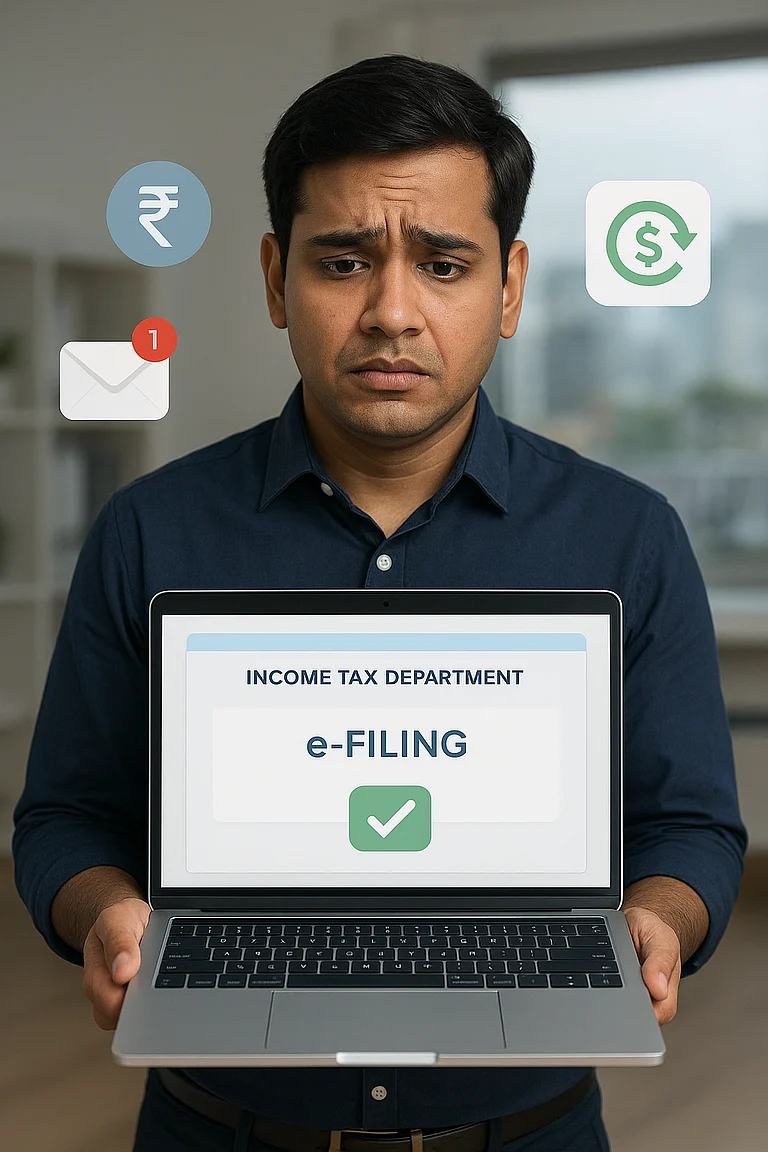ITR Last Date: The last day for filing your income tax return is finally here and any cues for extension seem unlikely as of now. From filing Form 16 to sharing OTPs with your Chartered Accountant at midnight, the last week of July often takes a toll on taxpayers as they're bombarded with the jargon of ITR filing.
"Many millennials and Generation Z choose to work in a flexible way pursuing their interests while working in a hybrid manner. The income earned by way of freelancing, gig working or social media influencers needs to be disclosed and offered for taxation in India as income earned from business and profession," said Harsh Bhuta, Partner, Bhuta Shah and Co LLP.
For people with regular salaried income, the ITR month might just be like any other passing month. However, for freelancers, gig workers and social media influencers, the taxation month might become a bit tricky. Here is a simple guide for these people to file their ITR return-
Step 1: Head to the E-Filing Portal
Visit the official government website to file your ITR.
Step 2: Pick the Right Form
Use ITR-4 (or Sugam) if you're a small business owner or professional opting for presumptive taxation under Sections 44AD, 44AE, or 44ADA. Note that you cannot file ITR-4 form if your income is above Rs 50 Lakh.
Use ITR-3 if you're a businessperson or professional not using presumptive schemes. This requires a detailed reporting of income and expenses.
"There needs to be an honest disclosure of sources of income—cash payments received and non-monetary compensation. Keep detailed expense records for claiming legitimate deductions. Carefully understand the ITR form applicable in the case—mostly Form ITR-3 or ITR 4," said Siddharth Maurya, Founder & Managing Director, Vibhavangal Anukulakara pvt ltd.
"Finally, remember to pay advance tax quarterly if your tax liability comes more than Rs 10,000 annually. Keep separate bank accounts for personal and business transactions," he added.
Step 3: Fill in Your Details
Carefully enter all your information into the form you chose. Double-check to make sure everything is correct.
Step 4: Check Form 26AS
Form 26AS shows all your tax-related info tied to your PAN for the year. It includes all the important information like TDS deducted, tax collected at source, advance tax payments and any refunds. Use this form to see what credits and payments are recorded.
Step 5: Claim Your Deductions
Remember to claim all eligible deductions and exclusions to reduce your tax liability. However, avoid claiming deductions you aren't eligible for. This could lead to notices from the Income Tax Department.
"Once the return gets submitted, the same needs to be verified either electronically or submission of physically signed Acknowledgment (Form ITR-V)," said Bhuta.































